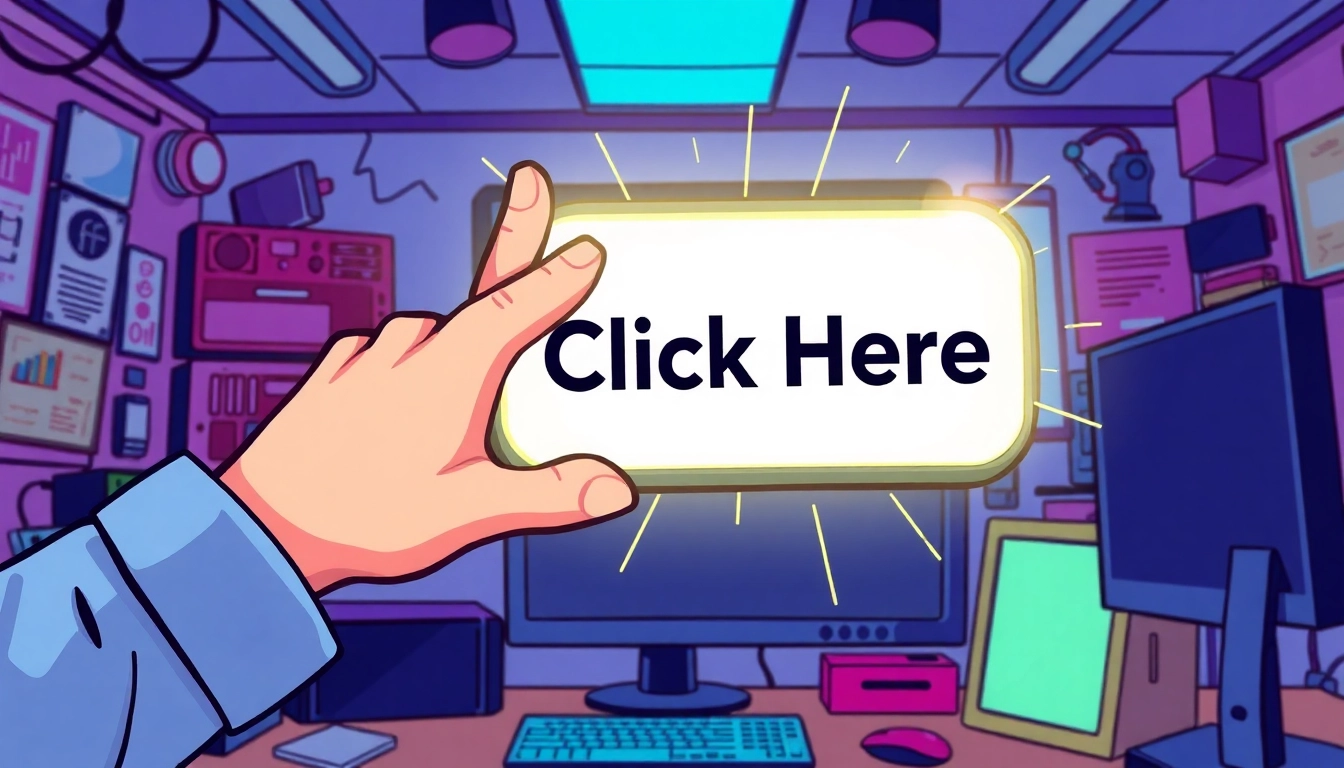Understanding the Impact of Link Text
In the world of digital content, the significance of link text cannot be overstated. The phrases we choose for our hyperlinks can drastically alter user engagement, search engine optimization (SEO), and overall website functionality. Historically, one phrase has been ubiquitous: “click here.” But as digital landscapes evolve, so too must our approach to link text. To explore the depths of this subject, we can start with a detailed analysis of why traditional phrases may not be sufficient. For deeper insights, Click Here.
Why “Click Here” Can Be Misleading
The term “click here” has become a standard instruction in the digital world. However, it presents several downsides. Firstly, it lacks context. Users may not understand what they will find after clicking the link, making it a poor choice when considering user experience. The accessibility community highlights this issue, emphasizing that such vague phrases hinder web navigation for individuals using screen readers, making it difficult for them to ascertain the link’s destination.
Furthermore, from an SEO perspective, using “click here” fails to provide search engines with relevant information about the content behind the link. This lack of contextual clarity worsens the website’s “information scent” – a term defining how intuitively a user can navigate a webpage based on its links. A stronger information scent leads to better engagement and, ultimately, higher conversions.
Alternative Phrases That Work
Given the limitations of “click here,” marketers and web developers need to adopt more effective alternatives. Here are several suggestions:
- Learn More: This phrase encourages users to discover additional information.
- Sign Up for Our Newsletter: Direct language motivates users to take a definitive action.
- Discover Our Services: This phrase offers insight, inviting users to explore what is offered.
- Get Started: A call to action that often leads to higher conversion rates.
These alternatives not only enhance usability but also boost SEO effectiveness by clearly describing the link’s intent and destination.
How Clarity Influences User Behavior
Link text clarity is essential in shaping user behavior. Studies show that users prefer actionable and descriptive phrases over vague ones. When confronted with clear link text, users are more likely to engage, which translates into higher click-through rates and improved bounce rates. In the realm of digital communications, clarity ensures users feel empowered to take action, whether that be signing up for a newsletter, exploring product offerings, or accessing valuable information. Clarity fosters trust, ultimately nurturing potential conversions.
Best Practices for Link Text Usage
Crafting Engaging Calls to Action
A potent call to action (CTA) can significantly influence user engagement. Crafting CTAs that resonate requires understanding the target audience’s motivations and desires. Consider these strategies for creating CTAs that draw clicks:
- Use Action-Oriented Language: Phrases like “download now,” “get your free trial,” or “join the community today” encourage immediate action.
- Create a Sense of Urgency: Phrases such as “limited time offer” or “only a few spots left” can prompt users to act quickly.
- Be Specific: Avoid ambiguous wording. Instead of “click here,” specify what they will receive or learn, such as “get your free ebook” or “watch the tutorial.”
Testing Different Phrases for Effectiveness
Just as in any aspect of marketing, testing is vital to discover what resonates best with your audience. A/B testing different phrases can yield insights into which CTAs drive higher engagement. This process involves creating two versions of a webpage, each featuring a different link text, and measuring performance through analytics tools. Analyzing metrics such as click-through rates (CTR) and conversion rates can help determine the more effective phrase, ensuring your final choice is data-driven rather than intuition-based.
Importance of Contextual Linking
Contextual linking refers to embedding links within relevant text, improving both user experience and SEO. Placing links strategically within content helps users gather pertinent information without disrupting their reading flow. For example, in an article about gardening tips, linking “native plants” to a page offering a list of local native species provides useful resources and enhances navigation.
Additionally, contextual linking helps search engines understand the topic of the content, aiding in indexing and improving search rankings. To master contextual linking, focus on relevance; ensure links lead to content that is valuable and directly related to surrounding text.
SEO Implications of Link Text Choices
Impact on Search Engine Rankings
The text selected for hyperlinks plays a crucial role in how search engines interpret the content of a page. Using descriptive and relevant anchor text contributes to stronger SEO, as it informs search engines about the nature of the linked content. This practice helps to establish a page’s authority on certain topics, enhancing its likelihood of ranking well in search results.
Additionally, avoiding generic phrases like “click here” can mitigate the risk of Google penalizing your page for low-quality content. Search engines prioritize user experience, and they’re likely to favor pages that use precise and informative link text.
Enhancing Information Scent for Better Crawling
“Information scent” is foundational for user navigation and search engine crawling. By employing descriptive link text, you enhance the information scent, making it clear what users can expect. This approach benefits both actual users and search engine bots, improving overall site structure.
To optimize information scent, ensure internal links are contextually relevant. The more descriptive and straightforward the links, the easier it becomes for both users and search engines to navigate your site, ultimately benefiting SEO rankings.
Keyword Placement and Accessibility
Incorporating keywords into link text serves a dual purpose—enhancing SEO and improving accessibility. Search engines use anchor text to gather context about the linked content; consequently, relevant keywords in link text can significantly boost your page’s rankings for those terms.
Moreover, providing clear and informative link text aids users with disabilities, particularly those utilizing assistive technologies like screen readers. Inaccessible link text can lead to frustration, causing potential users to abandon the site. Ensuring that the link text provides sufficient information is essential for inclusivity and user retention.
Real-World Examples of Effective Link Text
Case Studies Showcasing Success
In analyzing various websites and their effective use of link text, several case studies stand out:
- Online Retailer: A popular e-commerce site changed the link text from “click here to shop” to “shop our best-selling items.” This minor adjustment led to a 15% increase in click-through rates.
- Travel Blog: A travel site modified various links from “click here for more information” to “explore our travel guides.” This update resulted in a substantial rise in page views and longer visitor duration on site.
- Charity Organization: By changing the link text for donation buttons from “click here” to “donate to support local families,” the organization experienced a 25% boost in donation amounts.
Analyzing Competitor Strategies
Conducting competitive analysis can reveal valuable insights into effective link text usage. Notable competitors may leverage unique CTAs that resonate well with their audience. Competitors focusing on specific and actionable link texts can inspire your strategy, aiding in enhancing user engagement.
Lessons Learned from Successful Brands
Top brands often follow similar principles when choosing link text. They emphasize clarity, action-oriented phrases, and relevance. For instance, companies like Amazon focus on what users gain by using specific link text, leading to higher engagement levels. By learning from these exemplary practices, brands can elevate their web content effectiveness.
Monitoring and Improving Link Performance
Tools for Analyzing Link Effectiveness
To ensure continual improvement in link performance, various tools can be employed:
- Google Analytics: This platform offers comprehensive insights into user behavior, allowing you to analyze click-through rates and identify which links resonate most with your audience.
- Heatmaps: Tools like Hotjar can visually track where users are clicking, helping you assess the effectiveness of your link placements.
- A/B Testing Tools: Platforms like Optimizely enable you to test different link texts and structures, measuring their impact on user engagement.
Iterating Based on User Feedback
User feedback is essential in guiding improvements. Whether through surveys, comment sections, or direct engagement with users, understanding their experiences can highlight areas for enhancement.
Utilizing customer feedback helps tailor your approach, ensuring that link text continues to evolve and meet user expectations. Iteration based on actual user experiences leads to a refined strategy that fosters engagement.
Adapting Strategies Over Time
The digital space is ever-changing, and what works today may not work tomorrow. Regularly revisiting your link text strategies is essential. Keeping abreast of evolving language trends, user behavior shifts, and industry developments enables you to maintain relevance and effectiveness.
Incorporating seasonal campaigns, adapting for mobile users, and analyzing competitors’ successes are all part of an agile strategy that can maximize link performance over time.















Leave a Reply